Rustem Pasha Mosque: History, Architecture, and Visiting Tips
Table of Contents
-
Who Was Rustem Pasha, and Why Was the Mosque Built in His Honor?
-
What Is the Historical Significance of the Rustem Pasha Mosque in Istanbul?
-
What Are the Unique Architectural Features of the Rustem Pasha Mosque?
-
Who Designed the Rustem Pasha Mosque, and What Is Its Architectural Style?
-
How Does the Tile Work Inside the Rustem Pasha Mosque Stand Out?
-
Where Is Rustem Pasha Mosque Located in Istanbul?
-
What Should You Know Before Visiting Rustem Pasha Mosque?
-
How Can You Reach Rustem Pasha Mosque by Public Transport?
-
What Are the Best Times to Visit Rustem Pasha Mosque for a Peaceful Experience?
-
What Role Does Rustem Pasha Mosque Play in Istanbul’s Religious Life Today?
-
How Has Rustem Pasha Mosque Influenced Ottoman and Islamic Art?
1. Who Was Rustem Pasha, and Why Was the Mosque Built in His Honor?
Rustem Pasha was one of the most influential statesmen of the Ottoman Empire, serving as the Grand Vizier under Sultan Suleiman the Magnificent. Born in the early 16th century in Croatia, Rustem Pasha rose to power through his loyalty and marriage to the Sultan's daughter, Mihrimah Sultan. Known for his strategic acumen, Rustem Pasha played a crucial role in the politics of the empire, becoming one of the most powerful figures of his time.
1.1 The Legacy of Rustem Pasha
The Rustem Pasha Mosque was built in his honor to reflect his high status and contributions to the empire. It symbolizes his legacy as a powerful yet controversial figure, known for his political acumen and wealth. The mosque stands as a lasting tribute to his influence and the architectural grandeur of the Ottoman period, embodying his complex persona as both a statesman and a patron of the arts.
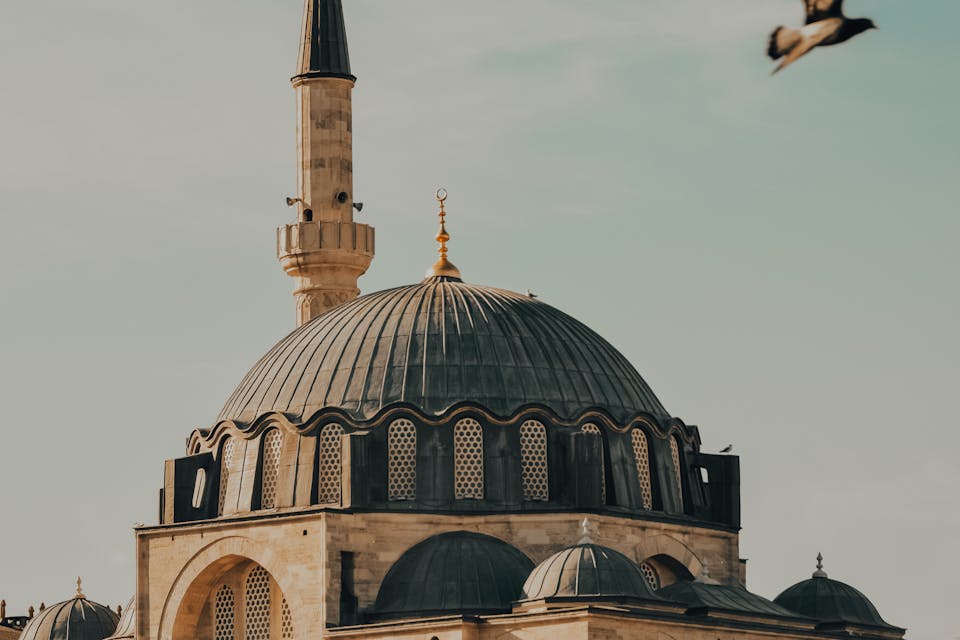
2. What Is the Historical Significance of the Rustem Pasha Mosque in Istanbul?
The Rustem Pasha Mosque holds significant historical value as a representation of Ottoman wealth, politics, and art. Constructed in 1561, the mosque not only honors Rustem Pasha’s legacy but also showcases the era’s architectural advancements. It is particularly renowned for its extensive use of Iznik tiles, making it a masterpiece of Ottoman craftsmanship.
2.1 A Testament to Ottoman Power and Culture
The mosque reflects the era's intricate connection between politics, religion, and architecture, highlighting how powerful individuals like Rustem Pasha used religious endowments to solidify their influence and legacy. As a symbol of the empire’s golden age, the Rustem Pasha Mosque continues to attract scholars, historians, and tourists interested in the rich tapestry of Ottoman culture.
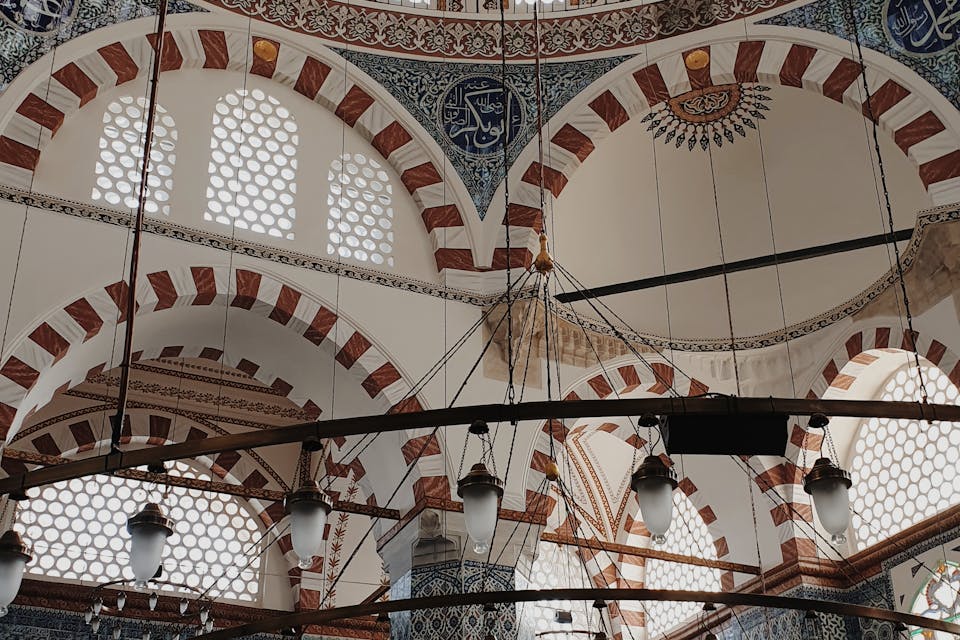
3. What Are the Unique Architectural Features of the Rustem Pasha Mosque?
The Rustem Pasha Mosque is celebrated for its unique architectural features that set it apart from other Ottoman mosques. Despite its modest size, the mosque is adorned with a stunning collection of Iznik tiles that cover the walls, mihrab, and minbar. These tiles are known for their vibrant colors and intricate floral and geometric patterns.
3.1 The Dome and Semi-Domes
Another distinctive feature is the mosque's central dome, supported by four semi-domes, which create a sense of openness and grandeur within the limited space. The use of light through strategically placed windows enhances the interior’s beauty, making it a visual delight.
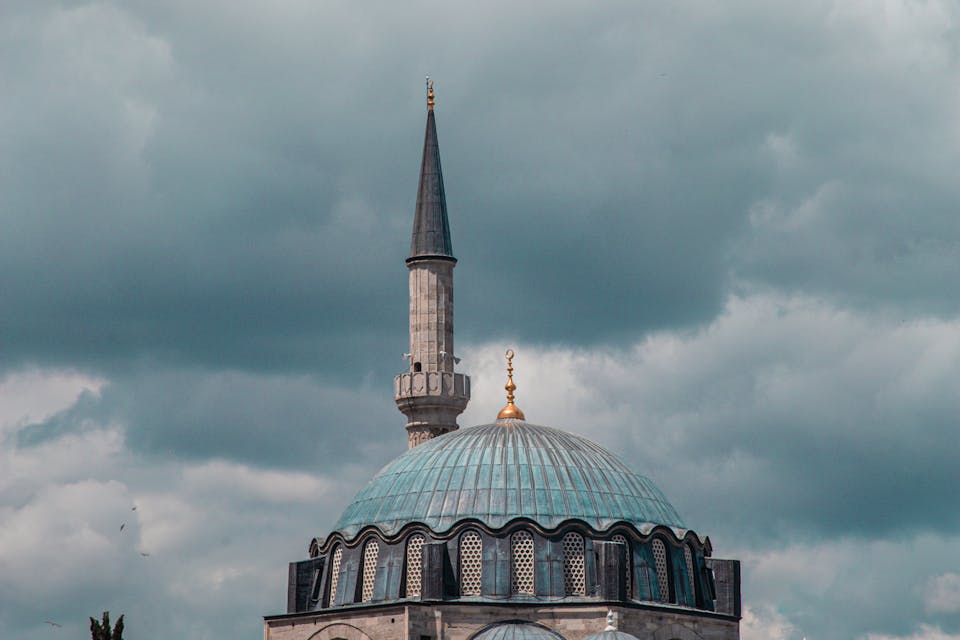
4. Who Designed the Rustem Pasha Mosque, and What Is Its Architectural Style?
The Rustem Pasha Mosque was designed by the renowned Ottoman architect Mimar Sinan, who is considered one of the greatest architects in Islamic history. Sinan’s design reflects the Classical Ottoman architectural style, characterized by the harmonious balance of space, light, and decorative elements.
4.1 Sinan's Architectural Genius
The mosque’s layout is compact yet efficient, demonstrating Sinan’s mastery in creating a sense of grandeur in smaller spaces. The architectural style of the mosque incorporates elements such as a central dome, semi-domes, and a square base, which are hallmarks of Sinan’s work, seamlessly blending functionality with aesthetic beauty. Sinan’s touch makes the mosque an essential study for those interested in Ottoman architecture.
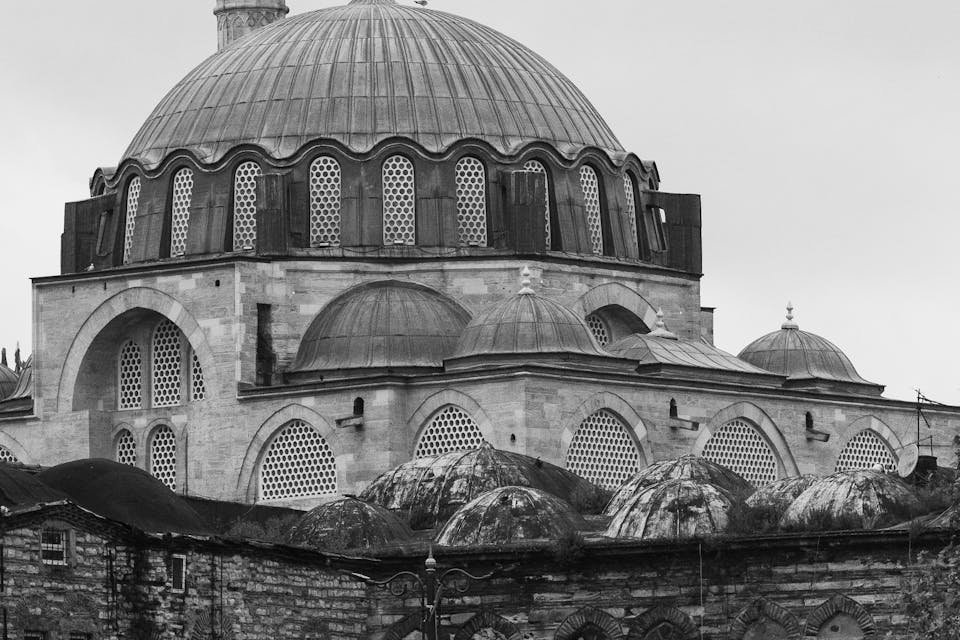
5. How Does the Tile Work Inside the Rustem Pasha Mosque Stand Out?
The tile work inside the Rustem Pasha Mosque is one of its most striking features, distinguishing it as an architectural gem. The mosque is adorned with a vast array of Iznik tiles, which cover almost every surface within.
5.1 The Artistic Value of Iznik Tiles
These tiles are renowned for their vibrant colors, including deep blues, reds, and greens, and their intricate patterns depicting flowers, vines, and geometric shapes. The extensive use of these tiles was a reflection of Rustem Pasha’s wealth and status, as Iznik tiles were among the most expensive materials available at the time. The meticulous craftsmanship and artistic quality of the tiles make the mosque a visual masterpiece, attracting art lovers and historians alike.
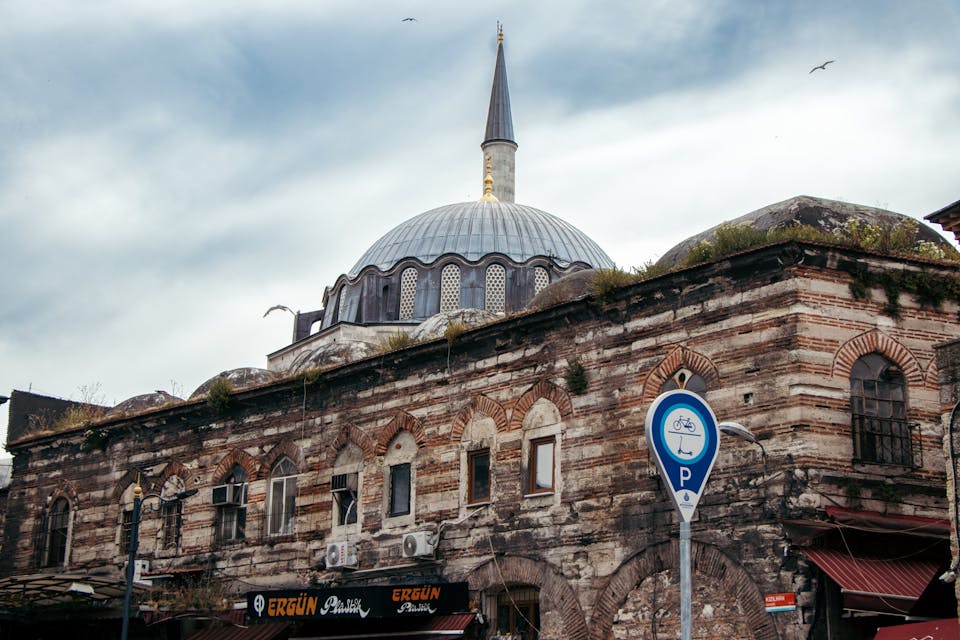
6. Where Is Rustem Pasha Mosque Located in Istanbul?
The Rustem Pasha Mosque is located in the bustling Eminönü district of Istanbul, near the Spice Bazaar. Situated on a hill overlooking the Golden Horn, the mosque is somewhat hidden among the narrow streets and busy markets, giving it a secluded feel despite being in a lively area.
6.1 A Strategic and Cultural Location
Its location in the heart of the historic peninsula makes it easily accessible to visitors exploring Istanbul’s rich cultural and architectural heritage. The mosque’s proximity to other significant landmarks, such as the Süleymaniye Mosque and the Galata Bridge, makes it a must-visit site for those interested in Ottoman history and architecture.
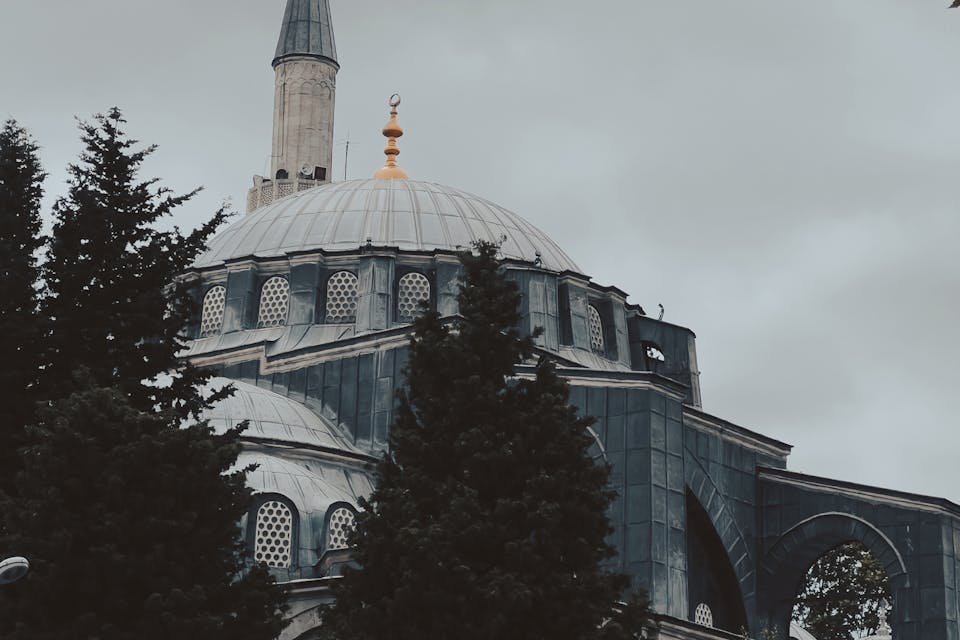
7. What Should You Know Before Visiting Rustem Pasha Mosque?
Before visiting the Rustem Pasha Mosque, there are a few key things to keep in mind. Firstly, the mosque is an active place of worship, so it’s important to dress modestly and be respectful of prayer times. Visitors should remove their shoes before entering, and women are advised to cover their heads with a scarf.
7.1 Tips for a Respectful Visit
The mosque’s interior is relatively small, so it can get crowded, especially during peak tourist seasons. Additionally, because of its location in the Eminönü district, the mosque is surrounded by busy markets and shops, making it a great spot to visit as part of a larger tour of the area. Consider visiting during off-peak hours for a more peaceful experience.
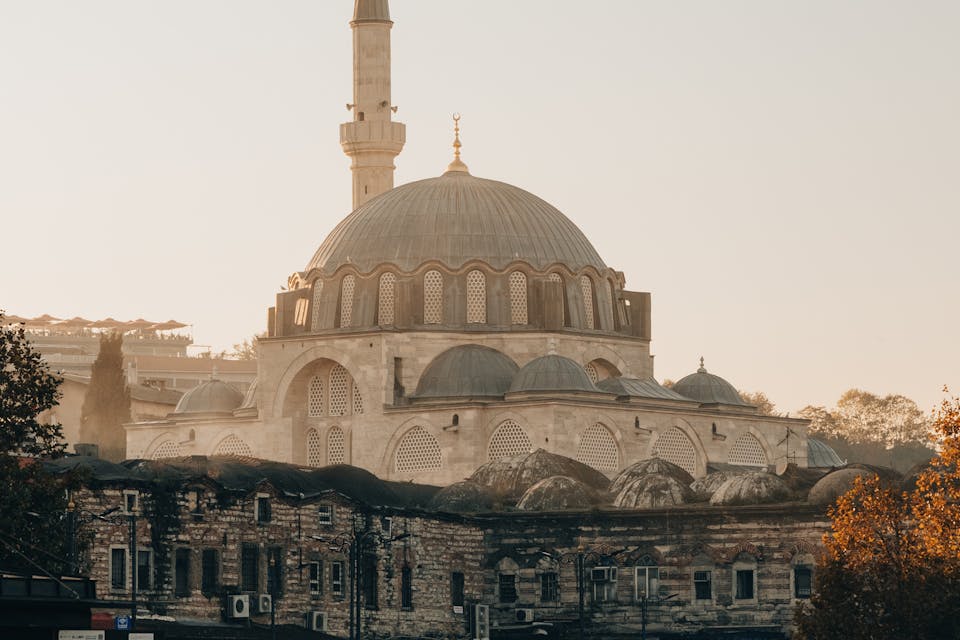
8. How Can You Reach Rustem Pasha Mosque by Public Transport?
Reaching the Rustem Pasha Mosque by public transport is convenient, given its central location in Istanbul. The easiest way is to take the Tram Line T1 and get off at the Eminönü stop. From there, the mosque is just a short walk through the Spice Bazaar or along the bustling streets of the district.
8.1 Alternative Routes and Transportation Options
Several bus routes stop near Eminönü, and the ferry lines connecting the Asian and European sides of Istanbul also dock nearby. The mosque’s proximity to major transportation hubs makes it easily accessible from different parts of the city, allowing for a seamless visit to this historic site.

9. What Are the Best Times to Visit Rustem Pasha Mosque for a Peaceful Experience?
To enjoy a peaceful experience at the Rustem Pasha Mosque, it’s best to visit during the early morning or late afternoon, outside of prayer times. Weekdays tend to be less crowded than weekends, as the surrounding markets are busier on weekends.
9.1 Planning Your Visit
Visiting early in the day not only allows for a quieter exploration of the mosque but also provides better lighting for appreciating the intricate tile work. Avoiding peak tourist seasons, such as summer, can also contribute to a more serene visit, allowing you to fully immerse yourself in the mosque’s beauty and history.
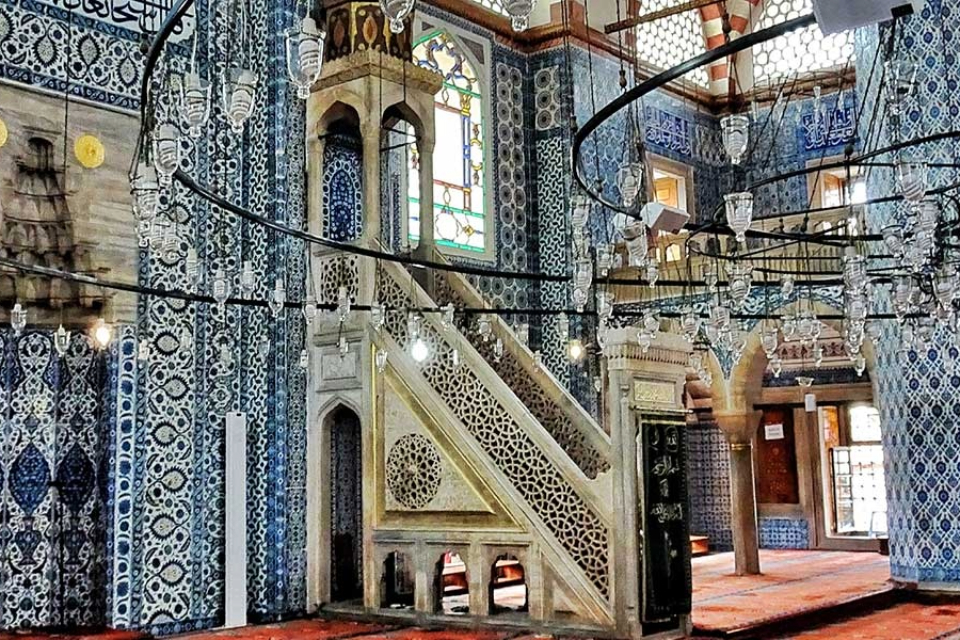
10. What Role Does Rustem Pasha Mosque Play in Istanbul’s Religious Life Today?
The Rustem Pasha Mosque continues to play an important role in the religious life of the local community. It remains an active place of worship, with daily prayers and regular religious services.
10.1 The Mosque as a Community Hub
The mosque also serves as a spiritual center for the surrounding neighborhood, offering a space for community gatherings, religious education, and charitable activities. Its ongoing use underscores the enduring significance of religious traditions in Istanbul, even as the city evolves. For many, the mosque is not only a historical landmark but also a living place of faith and devotion.
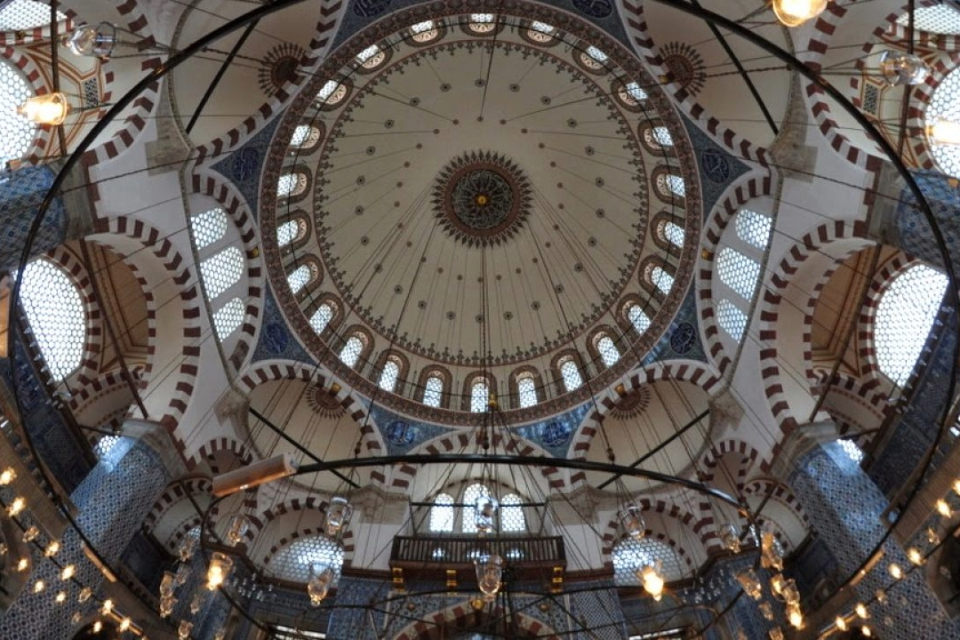
11. How Has Rustem Pasha Mosque Influenced Ottoman and Islamic Art?
The Rustem Pasha Mosque has had a lasting influence on Ottoman and Islamic art, particularly through its pioneering use of Iznik tiles. The mosque’s extensive and varied tile work set a new standard for the decorative arts in the Ottoman Empire, influencing subsequent architectural projects.
11.1 A Legacy in Art and Design
The vibrant colors, intricate patterns, and high-quality craftsmanship of the tiles became hallmarks of Ottoman artistic achievement. This influence extended beyond architecture, inspiring designs in ceramics, textiles, and other forms of Islamic art. The mosque stands as a testament to the creativity and innovation of the Ottoman period, leaving a legacy that continues to be celebrated in the world of art and design.